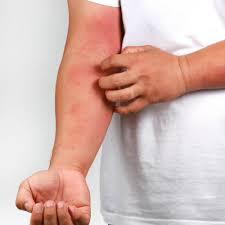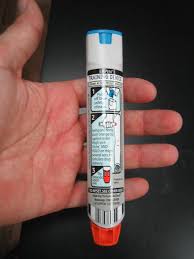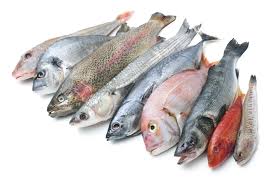Seafood is a significant part of the human diet, providing a healthy source of protein, but it can also cause illness through allergic and non-allergic food reactions. Seafood allergy is a hypersensitivity to dietary substances from shellfish, scaly fish, or crustaceans, causing an overreaction of the immune system, which may lead to severe physical symptoms.
Finned fish can cause severe allergic reactions, and this allergy is usually life-long. The protein in the flesh of most fish is commonly responsible for the allergic reaction, although it is also possible to react to fish gelatin, made from the skin and bones of fish.
Key Terms Related to Fish Allergy

1. Allergy: A foreign substance that induces an allergic or hypersensitivity response by producing immunoglobulin E (IgE).
2. Sensitization: The production of a specific type of allergic antibody by the immune system, resulting in a positive allergy test to a particular food or pollen. It is possible to produce an allergic antibody to a food without experiencing reactions upon eating it.
3. Parvalbumin: A calcium-binding albumin protein with low molecular weight (typically 9-11 kDa), found in fish.
Cause of Fish Allergy
The major allergen responsible for fish allergy is a protein called parvalbumin, which controls calcium balance in fish white meat. Parvalbumin is concentrated in fast-contracting muscles and in some brain and endocrine tissues. It is highly similar across different species of fish, which is why people allergic to one species of fish are often allergic to other fish species as well. Gelatin from fish is another major allergen. When a person sensitized to fish contacts or eats fish, an allergic reaction occurs, resulting in allergy symptoms.
Read Also: Cutworms: How to Identify and Get Rid of Cutworms
Symptoms of Fish Allergy

The symptoms of fish allergy are similar to other food allergies. Most people with fish allergy experience symptoms within an hour of eating fish. The most common symptoms include generalized itching, hives, swelling, vomiting, and respiratory symptoms like wheezing and chest tightness.
Fatal anaphylaxis can also occur. Some people with fish allergy may experience hives and itching when they touch raw fish, but can eat cooked fish without issues. Proteins in the steam from cooking fish can also cause symptoms such as asthma or hay fever in people allergic to fish.
Avoidance of Fish
Most individuals with an allergy to one type of fish should avoid all species of fish, as the major fish allergens are shared among many fish species. Seafood restaurants should also be avoided due to the risk of cross-contamination with fish allergens.
Fish proteins can be present in the steam released during fish cooking, potentially causing allergic reactions. Fish products like sushi, caviar, roe, fish oil capsules, and cod liver oil should be avoided by those with fish allergies. Shellfish are unrelated to fish, so people with fish allergy can eat shellfish. However, cross-contamination in seafood restaurants poses a risk.
Diagnosis and Treatment of Fish Allergy
Fish allergy is diagnosed when a person experiences allergic symptoms after eating fish and has a positive allergy test to fish, either through a skin test or blood test. Skin testing is the most reliable method, but blood tests can measure the amount of allergic antibody to fish. This helps in determining whether a person still has a true fish allergy or has outgrown it.
Scombroid Poisoning and Fish Allergy
A form of food poisoning called scombroid results from eating spoiled fish with large amounts of histamine. Scombroid poisoning typically occurs in large dark meat fish like tuna and mackerel. Symptoms mimic food allergy reactions, but allergy tests are negative since no allergic antibody is involved. Symptoms include breathing problems, red skin, hives, itching, nausea, and vomiting. Treatment for scombroid poisoning includes antihistamines, intravenous fluids, and medications to stop vomiting.
Read Also: 15 Medicinal Health Benefits of Ficus Deltoidea (Misletoea Fig)
Treatment of Fish Allergy

The primary treatment for fish allergy is strict avoidance of fish. If a fish-allergic individual eats fish and has a reaction, immediate treatment is required. This usually involves the use of injectable epinephrine (EpiPen or Twin-Ject), though mild reactions may be treated with antihistamines. Wearing a Medic-Alert bracelet and carrying injectable epinephrine is crucial for those with fish allergy.
Other treatment options include:
i. Adrenaline injection for severe anaphylactic reactions.
ii. Antihistamines for mild symptoms.
iii. Bronchodilators for asthma-related symptoms.
Managing food allergies centers on allergen avoidance. If allergen exposure occurs, treatment depends on the severity of the reaction. Fish allergy is usually not considered an emergency, but shellfish poisoning can be life-threatening, and immediate hospital treatment may be required.
Do you have any questions, suggestions, or contributions? If so, please feel free to use the comment box below to share your thoughts. We also encourage you to kindly share this information with others who might benefit from it. Since we can’t reach everyone at once, we truly appreciate your help in spreading the word. Thank you so much for your support and for sharing!
Read Also: Six Health Benefits of Sugarcane Juice

